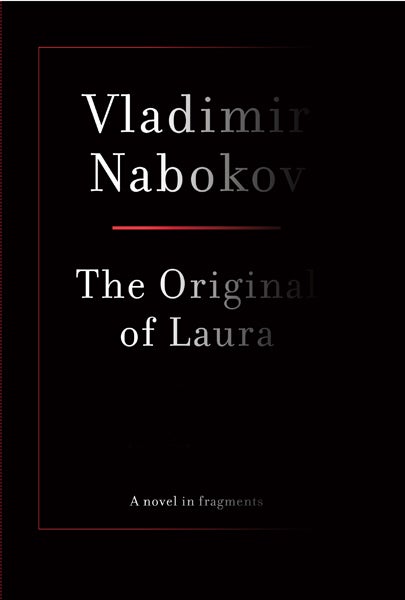
When Vladimir Nabokov died in 1977 at the age of 78 he was working on a novel to be called The Original of Laura. Nabokov is famous as the author of Lolita, Pale Fire, the memoir Speak, Memory and many other novels, essays, and short stories. He left instructions that in the event of his death any unfinished work was to be destroyed. He was known as a perfectionist and has advised that other writers should destroy rough drafts of their work so they won’t be picked over later by scholars (then again, his wife reportedly had to stop him from tossing Lolita into the incinerator at one point, so maybe he isn’t the best arbiter of cultural value).
To understand this book requires some knowledge of Nabokov's writing process. He has said that he likes to conceive his novels in full before he begins writing. He then writes the novel out on a series of index cards because it gives him the freedom to jump into different sections without being tied to the order of the novel and this also makes it easier to rewrite sections without having to perform major surgery on a typed or hand-written manuscript.
The incomplete manuscript for The Original of Laura consists of Nabokov's own handwriting across 138 index cards. The published book features a reproduction of an index card on each page with a printed version of the text below. It is really more like a roughly sketched out novella. The pages are printed on heavy paper stock and only printed on one side to give the novel more heft and justify the $35 list price. The cards were arranged by Dmitri with a few brief editorial clarifications included where necessary. That, along with Dmitri's introduction, is it.
The story is difficult to piece together. It jumps between short chapters (really just rough drafts of chapters) that tell the story of an overweight academic named Philip Wild who is married to a young, beautiful and promiscuous young woman named Flora. The opening scene describes an affair she has with another man after a party. The story then reaches back to tell stories of her past and her family. At some point a book has been written by one of her former lovers called "My Laura." It is a work of fiction but appears based on an affair the author had with Flora, a fact not lost on friends and acquaintances (one tells her: “And there’s your wonderful death ... You’ll scream with laughter. It’s the craziest death in the world."). Her husband finds it all humiliating, but also regards it as exceptionally well written. He is preoccupied with the idea of his own death and likes spend hours meditating, imagining erasing himself slowly from the toes up and then restoring himself. For about the first half of the novel the narrative holds together and you feel like you are reading a pretty normal, kind of choppy story but after that it begins to fall apart and becomes a series of notes and briefly sketched out scenes. Some cards just feature a quote, definition, or a series of synonyms (the last is: "efface, expunge, erase, delete, rub out, wipe out, obliterate,").
After so much anticipation the response from critics and scholars was one of disappointment. They found fault with the quality of the writing and the incompleteness of the novel, although I think it is unfair to judge this against such expectations. The questions shouldn't be: 'is this as good as other novels?' but rather: 'is this interesting; is it valuable; is it better than nothing?' Because 'nothing' is exactly what we had before, and now we have this glimpse into an idea for a novel from a masterful writer as he neared the end of his life. It's not a candidate for my best of the decade list, but it is a fascinating document. It is an insight into the writing process of a great writer. The incompleteness and obscurity is not intentional, and it is up to the reader to make sense of it without any way of knowing what is right or what was intended.
When I read a book there are usually scenes, moments, and descriptions that really jump out at me as being beautifully written and thought provoking. Usually these scenes occur in the context of a story but here they have to be found lying around on there own amidst the notes. I assure you that there are beautiful ideas and descriptions to be found in this book, but it is hard to really call it a book at all. Imagine a gifted writer leaves his notebook behind at a table in Starbucks and you flipped through it. The Original of Laura was interesting like that.

omg you read this!! I got my first Playboy magazine in November because they were publishing a preview of it. Read it, and was fascinated, but not fascinated enough to buy it (mostly because I rarely buy brand spanking new books - too expensive.) I didn't know it wasn't completely written and mostly in note form. So i haven't read it in its entirety (incomplete entirety) but it seems to me that it should be judged more as a potential for what it could have been if Nabokov had finished it, and not as in comparison to his other completed works.
ReplyDelete